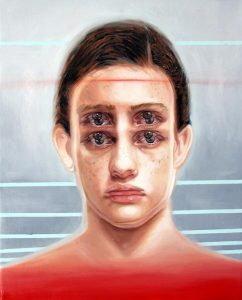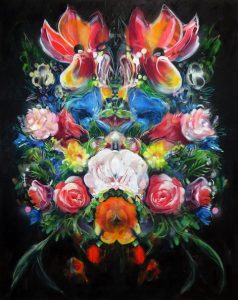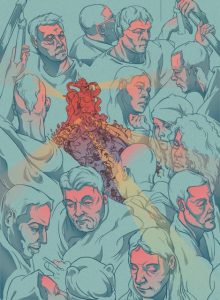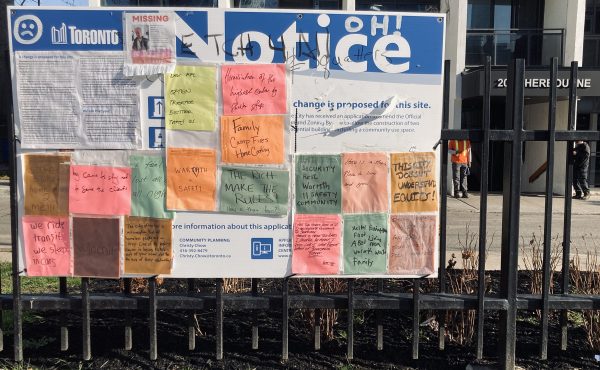
(Alex Garant, “Midnight”)
For the past month, you may have noticed a different kind of artwork gracing the TTC. These posters are not advertisements or images from Sketching the Line. Instead, they are part of the Life on the Line project, a mental health awareness campaign seeking to raise funds for the Canadian Mental Health Association’s Holiday Gift Program in Toronto. The program uses donations to buy gifts and necessities for those who are suffering from mental illness and find themselves isolated during the holiday season. Posters of these artworks can be purchased online at the TTC Shop, with a whopping 80% of the sales being donated to CMHA Toronto’s Holiday Gift Program.
The artworks for Life on the Line— created through the not-for-profit TwentyTwenty Arts (TTA)—consist of 20 stunning pieces that reflect and grapple with the realities of mental illness. Megan Kee, TTA’s founder and executive director, conceived the Life on the Line project based on a previous artistic venture she organized last year. In its first project, TTA exhibited Never Real Always True, in which artists were asked to submit works that reflected mental health stigma. Half the funds raised were donated to the Toronto Distress Centre.
When Kee thought about how she could take this kind of mental health campaign to a wider audience, a collaboration with the TTC came to mind. Not only would posters on the TTC reach a far greater number of people than artworks hanging in a gallery; the money that would have gone towards renting out a gallery could also be put towards donations.

(Chris Perez, “Duality”)
One of the amazing features of Life on the Line is that the artworks deal unflinchingly with the subject of mental illness without evoking despair and solitude. While some pieces reflect feelings of loneliness and anxiety—e.g., Alex Garant’s Midnight poster—they do not elicit these same sensations in the viewer. Instead, these posters offer dynamic perspectives on mental illness that are comforting, familiar and alluring. As can be interpreted from Chris Pereze’s Duality poster, for example, mental illness does not only have to be viewed as an affliction, but can also be thought of as a different way of seeing that is both beautiful and subversive. This sort of rendering does not serve to fetishize or romanticize mental illness, but allows us to engage with topics like isolation, addiction and depression in an alternative way.

(Jin Ke Wang, “Self-conscious”)
Subways and trains are often sites of despair and isolation. This sense of solitude can be heightened when you are told that togetherness with family and friends is the correct way to experience the holiday season. Megan Kee and the artists of Life on the Line have transformed the TTC into a moving art gallery that aims to address mental health while aspiring to heal, comfort and acknowledge the pain of those who may be suffering. This work not only seeks to depict its subject matter, but hopes to allay the experience of mental illness through artistic and practical means.
Life on the Line will be exhibited on the TTC until January 6th. If you are interested in buying a poster, click here: https://www.ttcshop.ca/collections/life-on-the-line.
Sarah Ratzlaff writes about public art for Spacing. Follow her on twitter at @ratzlaff_sarah
(Images reproduced with permission, TwentyTwenty Arts)



